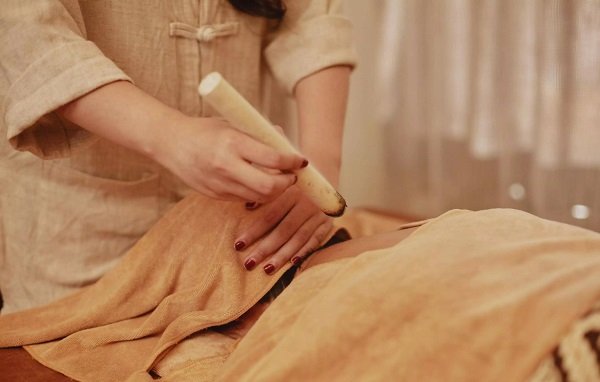Are Blisters After Moxibustion Really Burns? — Understanding the Truth About “Jiu Hua” (Moxibustion Blisters)
By Dr. Wu Mingjie
Many people worry when blisters appear during or after moxibustion, fearing they’ve been burned. However, from a Traditional Chinese Medicine (TCM) perspective, this phenomenon is not merely a superficial skin injury but rather a reaction known as “Jiu Hua” (moxibustion blisters), which reflects the body’s process of expelling pathogens, removing dampness, and unblocking meridians.
⸻
1. What Is Jiu Hua?
Jiu Hua, also called “moxibustion sores”, refers to small blisters or localized skin reactions that arise during moxibustion. In classical Chinese medicine, these were even regarded as signs of therapeutic effectiveness. As stated in the classic text Zhen Jiu Yi Xue (Essentials of Acupuncture and Moxibustion):
“When moxibustion sores erupt, diseases are removed as if by hand.”
This suggests that Jiu Hua is not a side effect, but a sign that the body is undergoing deep regulation and healing.
⸻
2. Why Do Jiu Hua Blisters Occur?
The appearance of Jiu Hua is often related to the following internal conditions:
• Accumulated cold and dampness in the body
• Stagnation in the meridians and collaterals
• Strong local pathological response
The same moxibustion technique may not produce the same result in every area of the body. Areas with underlying issues are more prone to blistering. For example, if blisters appear over the Stomach Shu point, it could indicate an underlying stomach issue.
⸻
3. What Blister Size and Shape Reveal About the Body
• Beginners in moxibustion: More likely to develop blisters, indicating blocked meridians
• Longer sessions: May lead to larger blisters due to deeper stimulation
• Regular moxibustion users: Fewer blisters; the body’s tolerance and balance improve
• Larger blisters: Suggest a greater accumulation of dampness and more severe stagnation
⸻
4. Blister Color and Sensation Reveal Internal Conditions
Blister Color TCM Interpretation
Clear/Colorless Cold-dampness accumulation
Yellow with odor Heat accumulation or damp-heat
Bloody or red Damp-toxin, inflammation
Itchy External wind invasion
These reactions are not harmful—in fact, they indicate the body is “clearing the battlefield.” The fluid within the blisters is considered a manifestation of expelled internal stagnation and toxins.
⸻
5. How to Care for Jiu Hua Blisters
• In general, no special treatment is necessary; avoid applying antibiotic creams or ointments
• If blisters rupture on their own, keep the area dry and clean, and avoid contact with water or contaminants
• For large blisters or unclean environments, cover the area properly to prevent infection
⸻
Gentle Reminder
Although Jiu Hua is a natural therapeutic response, treatment should be tailored to the individual and introduced gradually. Moxibustion is a treasured method of ancient healing, but it must be practiced with moderation and proper technique in order to truly “support the righteous and dispel evil” as intended in Traditional Chinese Medicine.



